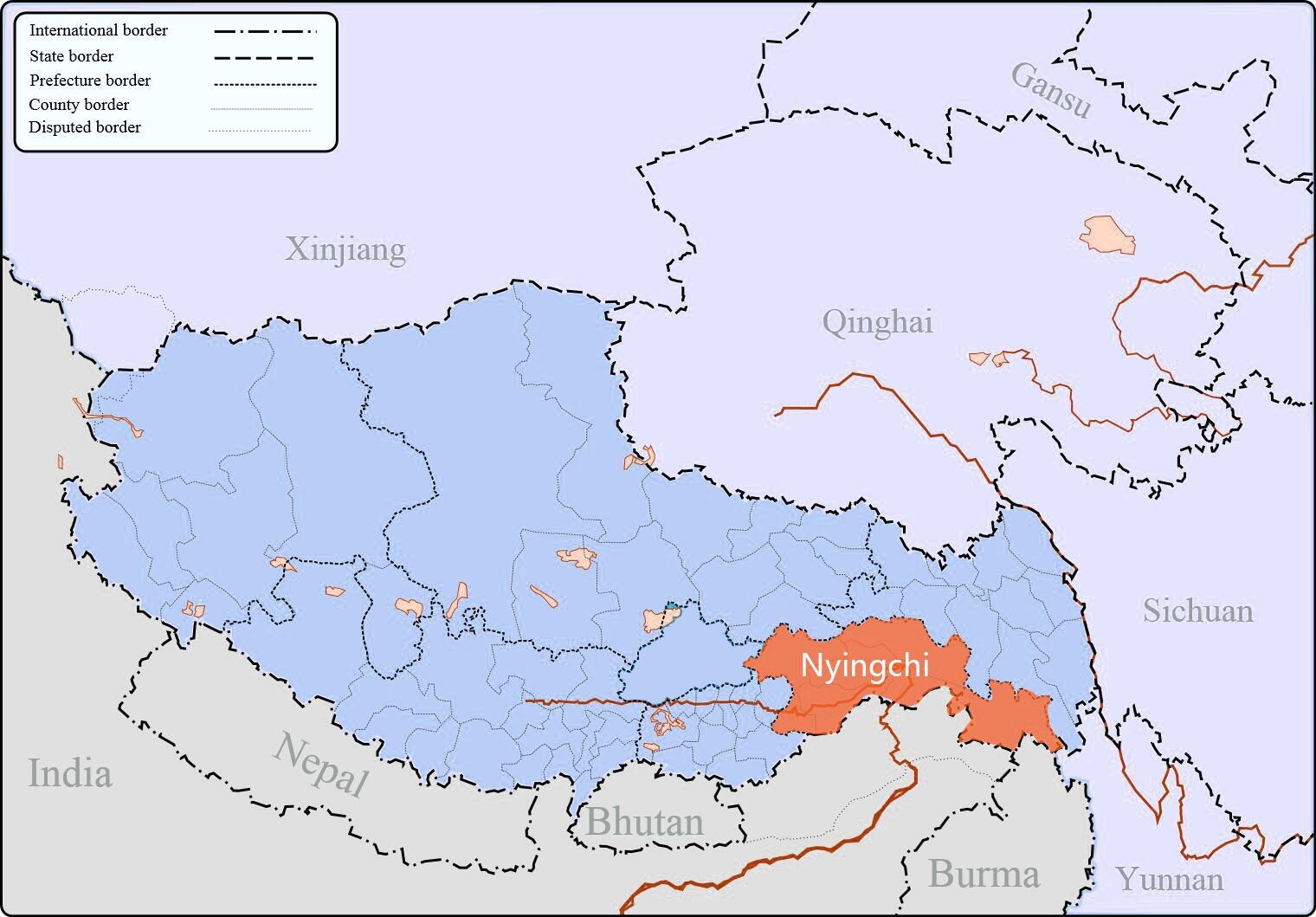ForumIAS announcing GS Foundation Program for UPSC CSE 2025-26 from 19 April. Click Here for more information.
ForumIAS Answer Writing Focus Group (AWFG) for Mains 2024 commencing from 24th June 2024. The Entrance Test for the program will be held on 28th April 2024 at 9 AM. To know more about the program visit: https://forumias.com/blog/awfg2024
Source: Business Standard
Relevance: China’s border strategy against India
Synopsis: China’s strategy of push and shove to solidify its position along the LAC requires bold and decisive action from India.
Context
- Recently, China’s President made a three-day visit to Tibet.
- Featuring prominently in his programme was the Tibetan town of Nyingtri (or Nyingchi) which is of strategic interest to India.
Strategic significance of Nyngchi to China
- Beijing claims that what India calls Arunachal Pradesh is actually Southern Tibet, a part of Nyingtri prefecture.
- Nyingtri is a key crossroads in Beijing’s plan to connect Tibet with China’s bustling Sichuan province.
- It is central to Beijing’s plan to connect the remote areas bordering India and to build massive dams on the Yarlung Tsangpo river system to generate hydropower for uses such as powering the electrified, high-speed, double track railway between Lhasa and Chengdu, Sichuan’s capital.
- A bullet rail link from Lhasa to Nyngchi was inauguarated recently.

| Must Read: Lhasa-Nyingchi rail line |
What is China’s Push and shove strategy?
Using border villages to strengthen its territorial claims
- Such as coercing border villagers to occupy disputed border areas, usually high pasturelands, thereby solidifying China’s territorial claims along the still disputed boundary with India and Bhutan and strengthening Beijing’s geo-political position.
- These included driving yak herds over land grazed by Bhutanese herders in the Beyul, demanding tax payments from the Bhutanese herders, planting Chinese flags on peaks and painting the word ‘China’ on rocks throughout the area.
- In the face of this, the Bhutanese herders moved away, abandoning their traditional grazing grounds.
Creating a network of quasi-militarised settlements: By implementing multiple intrusions across the disputed borders, Beijing has created a vast network of quasi-militarised settlements.
- Bhutan: Beijing’s eyes are fixed on pockets of territory on Bhutan’s western borders especially Doklam, from where the PLA could pose a military threat to India’s Siliguri corridor.
- Since 1990, Beijing has offered Bhutan a deal in which China would renounce its claim to Bhutanese territory Beyul, provided Bhutan cedes Doklam.
- When Bhutan declined Beijing’s so-called package deal, China stepped up the pressure by beginning road construction in the Beyul in 2015.

- By October 2018, China had completed the construction of Gyalaphug, an entire village in the Beyul. Other villages and infrastructure followed as an estimated 250,000 Tibetans were resettled thus in vulnerable pockets along the border.
Threatening Indian graziers: China plays this game across the Line of Actual Control (LAC) with India, supporting its own yak graziers and threatening India’s. The area across the Indus at Dungti, near Demchok in Southern Ladakh, which is claimed by India, is no longer visited by Ladakhi herders after several were beaten up by Chinese border guards. Indian graziers in the Chushul area also face similar

Way forward
Countering the Chinese game will require a bold political leadership that unequivocally supports our military forces.
Terms to know:




